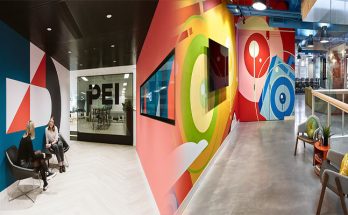A creative agency website serves as a digital storefront showcasing the agency’s brand identity, services, and portfolio to potential clients. Crafting an effective and visually appealing website is crucial for attracting and engaging visitors. In this article, we’ll explore the key elements that contribute to the success of a creative agency website design.
1. Striking Visuals and Creative Imagery
The visual appeal of a creative agency website is paramount. High-quality images, videos, and graphics can captivate visitors and convey the agency’s creativity and design expertise. Using a mix of visually stunning elements that reflect the agency’s style and aesthetic can leave a lasting impression on visitors. Consider incorporating full-screen images, unique animations, and interactive elements to make the website visually engaging.
2. Clear Brand Messaging and Storytelling
Crafting compelling brand messaging and storytelling is essential for effectively communicating the agency’s values, mission, and unique selling propositions. Clearly articulating what sets the agency apart from competitors and showcasing its expertise in a creative and engaging manner can help build trust with potential clients. Utilize engaging copywriting, impactful headlines, and storytelling techniques to create a memorable brand narrative that resonates with visitors.
3. Intuitive Navigation and User Experience
A well-designed navigation structure and user experience are critical for ensuring that visitors can easily find the information they are looking for on the website. Organize content logically, use clear and concise menu labels, and implement intuitive navigation tools such as breadcrumbs and sticky headers to enhance usability. Employing responsive design principles to optimize the website for various devices and screen sizes is also essential for providing a seamless user experience.
4. Showcasing Portfolio and Case Studies
Highlighting past projects, case studies, and client testimonials is a powerful way to showcase the agency’s creative work and demonstrate its capabilities to potential clients. Design a visually appealing portfolio section that showcases a diverse range of projects, highlighting key details, client objectives, and the agency’s creative solutions. Including testimonials and client success stories can further validate the agency’s expertise and build credibility with visitors.
5. Calls-to-Action and Contact Information
Including clear calls-to-action (CTAs) throughout the website encourages visitors to take specific actions such as contacting the agency, requesting a consultation, or viewing the agency’s services. Strategically place CTAs that stand out visually and guide visitors towards desired actions. Additionally, prominently displaying contact information, including a contact form, phone number, and social media links, makes it easy for visitors to get in touch with the agency and inquire about its services.
6. Optimized for SEO and Performance
Ensuring that the creative agency website is optimized for search engines (SEO) and performance is essential for increasing visibility and attracting organic traffic. Implementing SEO best practices such as using relevant keywords, optimizing meta tags, and creating high-quality content can help improve the website’s search engine rankings. Additionally, optimizing website performance by reducing load times, optimizing images, and implementing caching mechanisms can enhance user experience and reduce bounce rates.
By incorporating these key elements into the design of a creative agency website, agencies can create a compelling online presence that effectively showcases their creativity, talent, and expertise to potential clients. A well-designed website that captures the essence of the agency’s brand and conveys its unique value proposition can serve as a powerful marketing tool for attracting clients and driving business growth.





